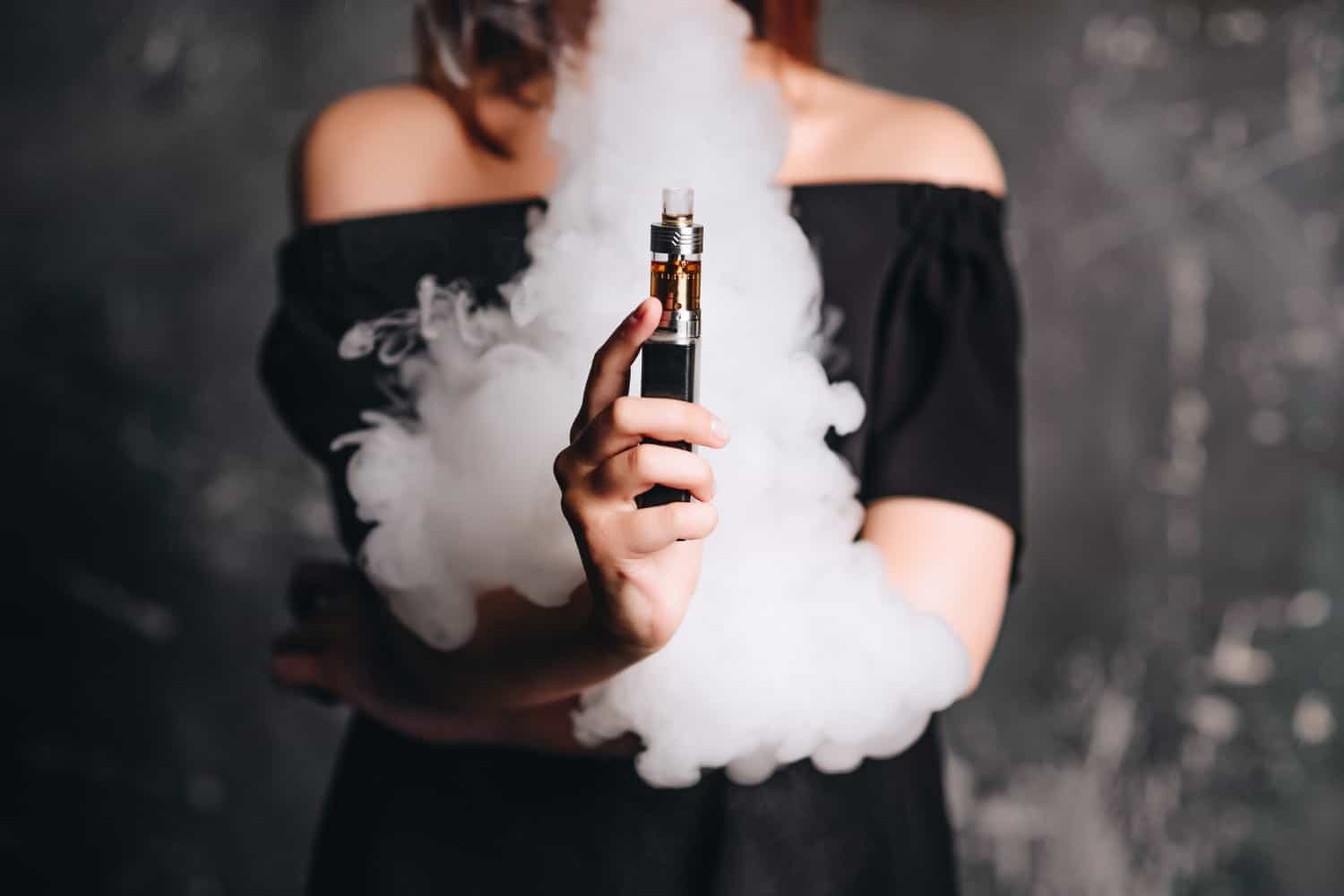WARNING: This product contains nicotine. Nicotine is an addictive chemical.
In recent years, the popularity of disposable vapes has surged among adults seeking an alternative to traditional smoking. However, an increasing number of users report experiencing discomfort or sickness after using these devices. This phenomenon raises concerns and questions about the safety and side effects of disposable vapes. This article delves into the potential reasons behind the adverse reactions some individuals experience, offering insights into the ingredients, usage habits, and physiological responses associated with disposable vaping.
If you want to know more, please refer to this article:
https://keystonevape.com/best-vape/the-best-disposable-vapes-2024-you-cant-miss/
Disposable vapes contain a mixture of chemicals and additives that can affect individuals differently. The first section will explore the common ingredients found in vape liquids, such as propylene glycol, vegetable glycerin, nicotine, and artificial flavorings. We will discuss how these substances can potentially lead to irritation in the respiratory system, allergic reactions, or other health issues in sensitive individuals. Understanding the chemical makeup of vape juice is crucial for users to make informed decisions about their vaping habits.
Nicotine, widely recognized for its presence in both traditional cigarettes and vaping products, plays a significant role in the user experience of disposable vapes. This stimulant is known for its addictive qualities, but its impact on the body extends far beyond its addictive nature. For individuals not accustomed to nicotine intake, such as non-smokers or occasional smokers, the encounter with nicotine through disposable vapes can be particularly jarring. The symptoms associated with nicotine exposure, including nausea, headaches, and dizziness, are often more pronounced in these groups. This heightened sensitivity can result in an unpleasant experience even with relatively low levels of nicotine consumption, which is concerning given the varying nicotine concentrations in disposable vapes.
The potential for overconsumption of nicotine with disposable vapes is a notable risk, especially due to the ease of use and the convenience these devices offer. Unlike traditional cigarettes, where the act of lighting and smoking is a deliberate process, disposable vapes allow for continuous and often unmonitored use. This can lead to users inadvertently ingesting higher amounts of nicotine over shorter periods, exacerbating the risk of adverse effects. Moreover, the lack of standardization in nicotine content across different brands and flavors of disposable vapes complicates users’ ability to regulate their intake. For individuals with low nicotine tolerance, this can mean a greater likelihood of experiencing the uncomfortable and potentially harmful side effects of nicotine overconsumption, underscoring the importance of awareness and caution in the use of these devices.
The allure of disposable vapes often lies in their vast array of enticing flavors, from sweet fruits to rich desserts, made possible by artificial flavorings. While these additives serve to elevate the sensory pleasure of vaping, they can also introduce a range of compounds that may not sit well with everyone. Some of these flavoring agents are known to contain substances that can irritate the respiratory tract, leading to discomfort in the throat or lungs upon inhalation. Additionally, certain flavors may contain allergens or irritants that can trigger reactions in susceptible individuals, ranging from mild irritation to more severe allergic responses. Among the most notable are compounds such as diacetyl, which, despite being safe for ingestion, has been linked to respiratory issues when inhaled. This complex interplay of chemicals underscores the need for users to approach flavored disposable vapes with caution, particularly if they have a history of sensitivities or allergies to certain ingredients.
Watch the video below.
The second section will address how the quality and maintenance of disposable vapes can contribute to user discomfort. Low-quality products or those that have been improperly stored can degrade, leading to a compromised vaping experience. This part of the article will offer advice on selecting reputable brands and tips for ensuring product integrity before use.
The market for disposable vapes is diverse, featuring a wide range of products that differ not just in flavor and appearance but also in quality and safety. The disparity in manufacturing standards and quality control among various brands can lead to significant differences in user experience. High-quality disposable vapes are characterized by rigorous testing, transparent ingredient listing, and adherence to industry safety standards, ensuring a safer and more consistent vaping experience. To identify such products, consumers should look for brands that provide comprehensive product information, including the source and composition of the e-liquid, and have a track record of positive user reviews. Additionally, reputable brands often engage in third-party testing and are forthcoming about their manufacturing processes. Avoiding potentially harmful products involves steering clear of brands with a history of safety issues or those that lack clear labeling and product information. By prioritizing quality and safety in selecting disposable vapes, users can better protect themselves from undesirable outcomes and enjoy a more satisfying vaping experience.
To ensure the integrity and performance of disposable vapes, proper storage and handling are essential. The chemical composition of e-liquid is sensitive to environmental factors such as temperature, light, and humidity, which can lead to degradation or alteration of the flavors and nicotine content. To avoid such adverse effects, it is advisable to store disposable vapes in a cool, dry place, away from direct sunlight and extreme temperatures. This precaution helps in preserving the quality and consistency of the vape juice over time.
Furthermore, handling the device with care is crucial to its functionality. Disposable vapes are designed to be user-friendly and robust, but they can still be susceptible to damage from drops, impacts, or exposure to water. Such incidents can compromise the device’s battery, heating element, or e-liquid reservoir, potentially leading to leaks or failure. Users should also ensure the vape’s mouthpiece remains clean and clear of debris, which can obstruct airflow and diminish the vaping experience. By adopting these simple yet effective practices for storage and handling, users can significantly extend the life and enhance the performance of their disposable vapes, ensuring a more enjoyable and reliable experience.

This section will explore how the manner in which individuals use disposable vapes can influence their reaction. Inhaling too deeply, using the device too frequently, or not taking breaks can lead to symptoms like nausea, coughing, or a sore throat. Adjusting vaping techniques and patterns may alleviate these symptoms for some users.
When it comes to vaping, especially for those new to the experience or using disposable vapes, the technique of inhalation plays a crucial role in avoiding irritation and discomfort in the respiratory system. Unlike traditional smoking, where deep and prolonged drags are common, vaping benefits from a gentler approach. The ideal technique involves taking shorter, more controlled puffs, allowing the aerosol to be inhaled smoothly without overwhelming the lungs. This method not only minimizes the risk of irritation caused by the vapor but also helps in efficiently absorbing nicotine, reducing the likelihood of nicotine overdose which can lead to feeling sick. Additionally, allowing brief pauses between puffs gives the device’s heating element adequate time to cool down, ensuring the e-liquid is vaporized at a consistent rate and temperature. By adjusting their inhalation technique to a more moderate and mindful approach, vapers can enhance their experience, making it more enjoyable and less likely to cause discomfort or adverse reactions.
Overuse of disposable vapes is a common pitfall that can result in an excessive intake of nicotine and other chemicals, leading to various symptoms of discomfort such as nausea, headaches, and dizziness. Recognizing the signs of overuse is crucial for maintaining a healthy vaping experience. Symptoms to watch for include increased tolerance to nicotine, where more of the substance is required to achieve the desired effect, as well as physical signs such as restlessness, palpitations, and digestive issues. To combat overuse, it’s advisable to consciously monitor vaping habits, setting clear boundaries for usage. For instance, limiting the number of puffs per session or designating specific times of the day for vaping can help in controlling consumption. Additionally, choosing disposable vapes with lower nicotine content or gradually reducing usage can aid in preventing the adverse effects associated with excessive intake. Implementing these strategies not only helps in moderating consumption but also in fostering a more balanced and enjoyable vaping experience.
The final section will consider personal health factors and pre-existing conditions that may make individuals more susceptible to feeling sick from vaping. Conditions such as asthma, allergies, or sensitivity to certain chemicals can exacerbate the adverse effects of vaping.
Understanding individual health and sensitivities is paramount when engaging in vaping, as personal reactions to nicotine and other ingredients in vape juice can vary dramatically from one person to another. Factors such as pre-existing health conditions, allergies, and individual tolerance levels play a significant role in how one’s body might respond to vaping. For example, individuals with respiratory conditions like asthma may find that certain ingredients exacerbate their symptoms, while others might discover they have a low tolerance for nicotine, leading to adverse reactions even at lower doses. Being aware of these personal health aspects and sensitivities is crucial in making informed decisions about vaping, including the selection of appropriate devices and e-liquid formulations. Opting for lower nicotine concentrations or avoiding certain flavoring agents known to cause irritation can help tailor the vaping experience to one’s personal health profile, minimizing the risk of discomfort and adverse reactions. This personalized approach to vaping underscores the importance of self-awareness and informed choice in ensuring a safer and more enjoyable experience.
For those who encounter persistent or severe symptoms after vaping, particularly individuals with pre-existing health conditions, consulting a healthcare professional becomes imperative. Vaping, like any substance use, can interact in complex ways with various health issues, potentially exacerbating underlying conditions or triggering new symptoms. Symptoms such as prolonged throat irritation, breathing difficulties, or unusual reactions should not be overlooked, as they could be indicative of more serious health concerns related to vaping. A healthcare professional can offer personalized advice, taking into account one’s medical history, current symptoms, and specific vaping habits. This professional guidance is invaluable for understanding the potential health implications of vaping, including the need for adjustments in vaping behavior or even ceasing the practice altogether. Seeking medical advice ensures that individuals are making informed decisions about their health, prioritizing their well-being in the context of vaping-related activities.

The discomfort or sickness some individuals experience from using disposable vapes can stem from various factors, including the chemical composition of e-liquids, the quality and maintenance of the devices, vaping techniques, and personal health sensitivities. Ingredients like nicotine and artificial flavorings in vape juice can cause nausea, headaches, and respiratory irritation, particularly in those with low nicotine tolerance or sensitivity to certain chemicals. The disparity in device quality and improper handling can further compromise the vaping experience, leading to potential exposure to degraded substances. Moreover, improper inhalation techniques and overuse can exacerbate the intake of harmful substances, increasing the likelihood of adverse effects. Personal health factors, such as pre-existing conditions and individual sensitivities, play a significant role in how one reacts to vaping. It’s crucial for individuals to be aware of these factors, moderate their consumption, and seek professional advice if they experience persistent or severe symptoms, ensuring a safer and more enjoyable vaping experience.
